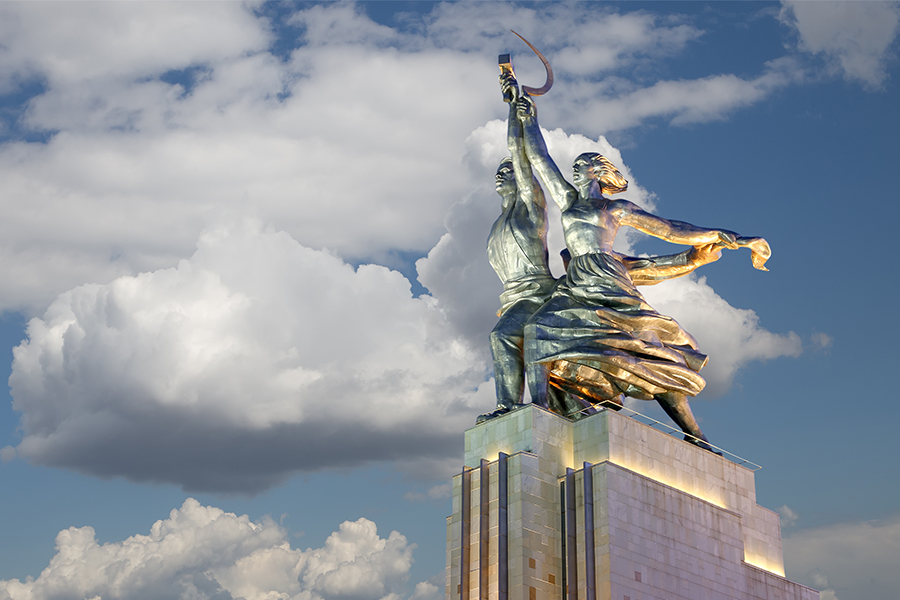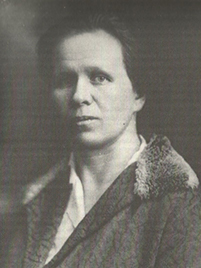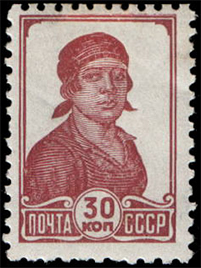
Work-Life Balance Through a Soviet Lens
The centenary of the Russian Revolution in 2017 marks 100 years since the start of the world's first socialist society. This historic event inspires questions about what lessons it and its experiments with free love, women’s equality and the socialization of household labor can offer the world today.
In a story about these issues, Austrian Broadcasting Company recently interviewed Carnegie Mellon University Historian Wendy Goldman on her 2002 book, “Women at the Gates: Gender and Industry in Stalin's Russia.” Goldman fielded questions about the post-revolutionary economy and women's equity in the workforce.
"Now that the Soviet Union has collapsed, there is a tendency to see it as something that offers no models, but in fact many of the experiments pioneered under socialism would still be enormously positive for working women today," said Goldman, the Paul Mellon Distinguished Professor of History in the Dietrich College of Humanities and Social Sciences.
The Soviet Union would eventually become the first country in the world to enshrine women’s equality with men into law and to legalize abortion. The Bolsheviks put forward a radical program that encompassed the socialization of household labor through public dining halls, daycare centers, and laundries; no-fault divorce; and recognition of cohabitation as the juridical equal of legal marriage.
At its start, the Soviet Union sought to overcome economic ruin and high unemployment. Female workers were challenged by scant job options and a shortage of funds to create the services needed to support full equality and to free them from the burden of housework.
Nevertheless, women persisted in organizing and pressuring the state.
Between 1929 and 1935, nearly four million Soviet women entered the workforce and began to earn wages.
“The working class grew at an unprecedented rate, changing in size and social composition. Even more striking was the critical role of women: in no country of the world did they come to constitute such a significant part of the working class in so short a time,” Goldman wrote in the introduction to “Women at the Gates.”
Goldman investigated the players and policies that brought women up to—and through—the gates of factories in the 1930s to benefit from waged labor.
For example, working class and peasant women rallied to organize a women's department within the Communist Party—the Zhenotdel—despite criticism from other party members. Committed and impassioned women, known as the “zhenotdelki” or “zhenskii aktiv” (meaning women activists), pushed within the Party and the labor unions to bring employment opportunities to women.
"These were women who were interested in transforming all of the issues of family and daily life so that women could be freed in order to realize themselves as people," Goldman said.  When the party promoted workplace productivity, Zhenotdel leader Aleksandra Artiukhina, the daughter of working-class parents in the textile industry, targeted the specific interests of women and emphasized the socialization of household labor.
When the party promoted workplace productivity, Zhenotdel leader Aleksandra Artiukhina, the daughter of working-class parents in the textile industry, targeted the specific interests of women and emphasized the socialization of household labor.
As women entered the work force, the Soviet government rolled out solutions. Government-subsidized canteens provided workers with daily meals. It created day care centers and public laundries. The new public resources eased the burden from women returning home after a day at work.
Further, women’s “re-gendering brigades” assessed which jobs, previously seen as “male,” might be suitable for women. Goldman explained that Soviet women had to push hard to gain this kind of equality, and they attained success despite discrimination and hostility from bosses and male coworkers.  Industries began to allow women to pursue skilled and semi-skilled positions, previously reserved for men only. Women, once consigned to the lowest and most unskilled jobs, now had a wide range of jobs available. Soviet women entered jobs in all areas that women in other countries were unable to access.
Industries began to allow women to pursue skilled and semi-skilled positions, previously reserved for men only. Women, once consigned to the lowest and most unskilled jobs, now had a wide range of jobs available. Soviet women entered jobs in all areas that women in other countries were unable to access.
"Opportunities for oppressed groups are never handed to them; people have to struggle for them. I think we should try to learn more about what happened in that time and that place. It's part of a legacy that we have as feminists today," Goldman said.
She continued, “The Russian revolution left us a powerful legacy. As women around the world struggle today with many of the same issues that faced women over a century ago—the contradiction between home and work, the right to control our own bodies, the opportunity to receive an education, and basic issues of equal rights and recognition—the radical vision offered by revolutionaries 100 years ago still has much to teach us.”
Top photo: Famous soviet monument Rabochiy i Kolkhoznitsa (Worker and Kolkhoz Woman OR Worker and Collective Farmer) of sculptor Vera Mukhina, Moscow, Russia, 1937.
Second photo: Aleksandra V. Artiukhina, pictured in 1930, led the Zhenotdel from 1927 to 1930. (Source: "Women at the Gates")
Bottom photo: A Soviet postage stamp depicting a female factory worker. This file was downloaded from Wikicommons, but a black and white version appears in Goldman's book.